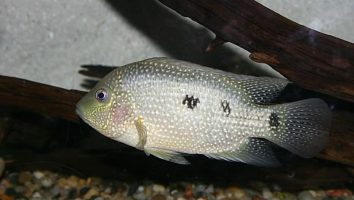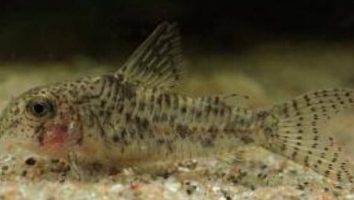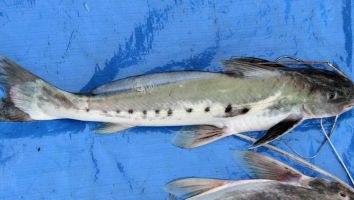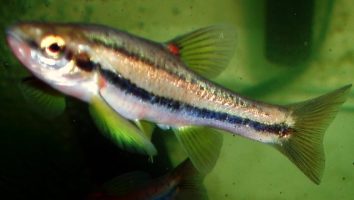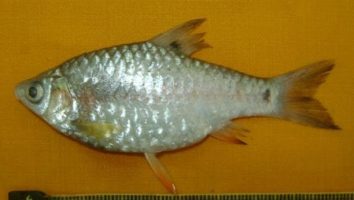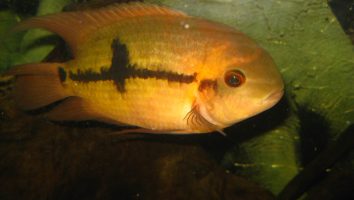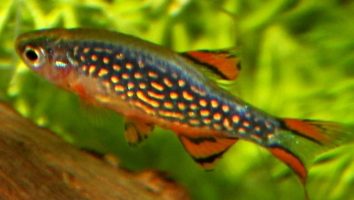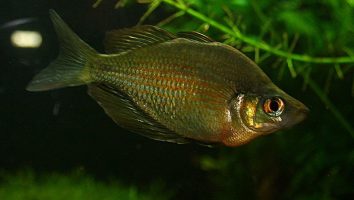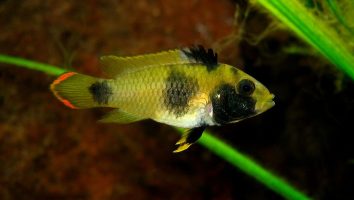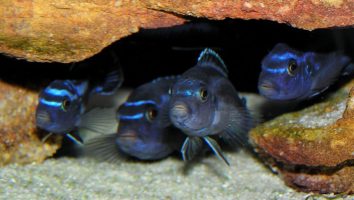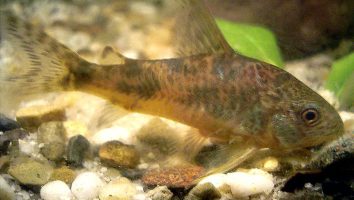The paradise fish is a beautiful and popular freshwater fish that is easy to care for.
This species is native to Southeast Asia and can be found in a variety of colors, patterns, and sizes.
But before you go out and buy one of these fish, there are a few things you need to know. In this guide, we’ll teach you everything you need to know about paradise fish care.
You’ll learn about their diet, tank mates, lifespan, and more!
Table of contents
Species overview
Paradise fish (Macropodus opercularis) are a freshwater fish native to East Asia. They are most commonly found in China, Korea, and Japan.
These fish get their name from their brilliant colors and patterns. The males are especially striking, with blue and red fins that are elongated and beautiful.
In the wild, these fish are found in slow-moving streams and rivers with plenty of vegetation. They are not a schooling fish, so they can be found solitary or in pairs.
In the aquarium, they are best kept in a species-only tank. They can be aggressive, and their long fins make them susceptible to nipping. They prefer a water temperature of 72-82 degrees Fahrenheit.
Appearance
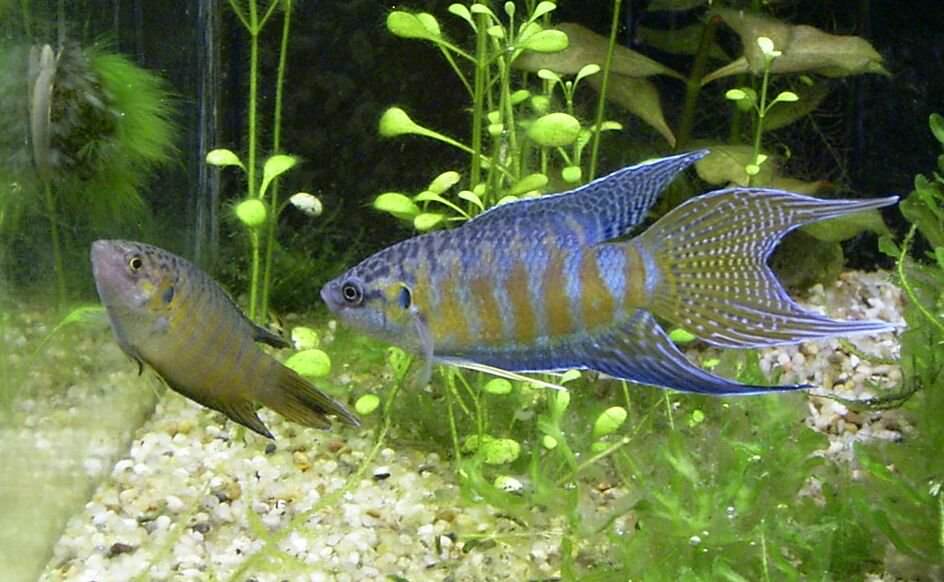
The first thing you’ll notice about the Paradise fish is their beautiful fins. The dorsal and anal fins are both very long and have a beautiful webbing that really makes them stand out.
The dorsal fin starts about two-thirds of the way back on the body and extends back almost the entire length of the fish. The webbing on this fin is quite lacy and delicate-looking.
The anal fin is a bit shorter than the dorsal but shares a similar look when it comes to the webbing. Both of these fins have a beautiful blue color with a yellow outline.
The caudal fin is also very long and has a bit of a split look to it. The upper lobe is much longer than the lower and both have a bit of webbing as well. The caudal peduncle is also very long which gives this fish an eel-like appearance at times.
The body of the Paradise fish is long and thin with a slight taper towards the tail. The coloration on the body is a bit more subdued than the fins.
The head of this fish is rather large and their mouths protrude out quite a bit. They have large eyes that sit on top of their head. Male Paradise fish also have a large nuchal hump that sits behind their head.
Lifespan
Paradise fish have a lifespan of 3 to 5 years. As with most fish, their lifespan can be shortened by poor care.
One of the most common problems that paradise fish face is ammonia poisoning. Ammonia is a toxic gas that’s produced when fish waste breaks down. It can quickly build up to lethal levels in a fish tank unless it’s properly filtered.
Paradise fish are also quite sensitive to changes in water temperature. Sudden changes can cause them a great deal of stress, which can lead to illness and early death.
Size
Paradise fish can grow to be about 3-4 inches long. However, they are typically only about 2-3 inches long.
Tank
Tank Size
The minimum tank size for a paradise fish is 10 gallons. If you’re looking for a freshwater fish that can fit in an average-sized tank, this is the fish for you.
You can keep multiple paradise fish in the same tank but we recommend at least 20 gallons for each additional fish.
Water Parameters
Paradise fish are a bit more demanding when it comes to water quality. They come from slow-moving, heavily vegetated rivers and streams in Asia.
To best replicate their natural environment, you’ll need to maintain the following water parameters.
- Water temperature: 70 to 80 degrees Fahrenheit
- pH levels: 6.8 to 7.4
- Water hardness: 4 to 8 dGH
- Alkalinity Levels: 2-12 dKH
What To Put In Their Tank
The inside of the tank is important for these fish, but not nearly as important as the outside.
Paradise fish are very sensitive to changes in water temperature and quality. This means that the tank itself needs to be able to provide stable conditions.
We recommend getting an aquarium that’s at least 20 gallons in size. This will give you some room to work with and help ensure that the water quality stays high.
The next thing you need to do is set up a filter. We recommend something with a good flow rate that can handle the size of your tank.
As for the substrate, these fish don’t really care. You can use gravel, sand, or even go with a bare-bottom setup.
Plants are a little trickier. These fish are known to uproot and nibble on vegetation, so you need to be careful about what you put in their tank.
We recommend hardy plants that can withstand a little abuse (Java Fern, Hornwort, or Anubias are all good choices). You can also go with artificial plants if you’re worried about them destroying everything.
Common Diseases
These fish are actually quite hardy and don’t fall ill often. However, there are a few diseases that they are susceptible to.
The most common one is ich. This is a parasite that will attach itself to your fish and cause white spots to form on their body.
If you notice this, it’s important to take action immediately. Consult your vet and begin treatment as soon as possible.
Other potential diseases include Hole-in-the-Head, Fin Rot, and Mouth Rot. As with ich, it’s important to take action quickly if you notice any of these symptoms.
The best way to prevent your fish from getting sick is to simply maintain a clean and stable tank. This will create an environment that is less conducive to disease and will make your fish much healthier overall.
Behavior & Temperament
The paradise fish is one of the most beautiful freshwater fish available to aquarium hobbyists. But don’t let its good looks fool you—this fish can be aggressive.
Males are especially territorial and will attack anything that enters their space, including other paradise fish, smaller fish, and even their own reflection. If you’re keeping paradise fish, it’s best to have only one male per tank. Multiple males will fight until there is a clear alpha.
Females are not as aggressive as males, but they can still hold their own in a fight. If you want to keep multiple paradise fish together, it’s best to have one male and several females.
When it comes to food, paradise fish are not picky eaters. They’ll eat just about anything, including live food, frozen food, and pellets.
Tank Mates
Paradise fish are not the easiest fish to keep. In the wild, they’re found in slow-moving streams in Southeast Asia. This means they’re used to still or very slow-moving water.
In the aquarium, they’re often found in community tanks. While they can get along with other fish, there are a few things you need to keep in mind.
For starters, these fish are territorial. They need plenty of hiding places and ample space to establish their own territory. If you don’t provide enough, they’ll become stressed and might start to fight with other fish.
Secondly, paradise fish are fin nippers. They’re not aggressive, but they will nibble on the fins of other fish. This can cause stress and might even lead to disease.
To avoid problems, it’s best to keep paradise fish with other peaceful species that can defend themselves. Some good tank mates include:
- Tetras
- Rasboras
- Danios
- Gouramis
- Livebearers
- Plecos
Breeding
The paradise fish is a beautiful but aggressive species, which can make breeding a bit of a challenge. If you’re up for it, though, the process is definitely rewarding.
The first thing you need to do is set up a breeding tank. It should be at least 30 gallons and should have a lot of hiding places. Driftwood, caves, and live plants are all good options.
The water should be around 80 degrees Fahrenheit with a neutral pH. You may also want to add a bit of peat to the water to recreate the natural environment.
When everything is ready, add two females for every male. The males are the ones with the more pronounced fins.
Feed the fish plenty of high-quality foods. Then, begin changing about 50 percent of the water. That should trigger spawning.
You’ll know you’re successful when you see the female deposit eggs on the driftwood. After she does that, the male will guard them diligently.
The eggs will hatch in about a week. You can move the babies into a nursery tank to improve their odds of survival. Feed them mashed peas and other green vegetables until they’re ready to join the adults in your main tank.
Conclusion
Overall, we think the paradise fish is a great option for intermediate aquarists. They’re not too difficult to care for but still require some attention and effort.
We think they’re a great option for someone who wants to add a little bit of flair to their tank. They’re also a good choice if you’re looking for a fish that’s a little bit different than the standard fare.
If you’re thinking about getting a paradise fish, we say go for it! We think you’ll be happy you did.

